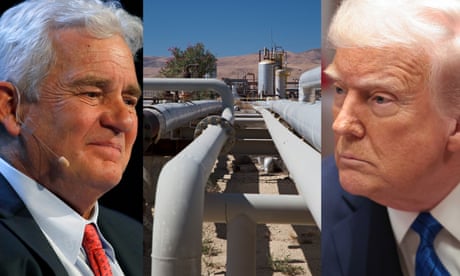U.S. Energy Secretary Chris Wright has introduced a sharp reversal of American energy policy, promising a “180-degree pivot” away from efforts to combat climate change and advocating for an expansion of oil and gas production.
Although the secretary’s stance is a far cry from the renewable energy-growth policies of the last administration, it is not necessarily opposed to low-carbon energy. Earlier this month, Wright touted the promise of geothermal energy, noting that “while it hasn’t achieved liftoff yet, it should and it can.”
As geothermal heating specialists and researchers, we see great promise in the administration’s support for geothermal, an emerging industry that relies on the skills of fossil fuel workers. That’s because, with the right investments, this country has the potential to unlock one of the most powerful and reliable sources of energy at our disposal: heat from the Earth itself.
Beneath much of the U.S., including the Northeast, where oil and gas extraction once dominated, layers of hot rock sit thousands of feet below the surface, holding vast stores of geothermal energy. “Enhanced geothermal systems” offer a way to tap into this heat by injecting fluid into artificially created fractures deep underground, allowing it to absorb heat from the hot rock and then be pumped back to the surface for direct-use heating.
The U.S. Department of Energy estimates that geothermal district heating alone could serve 45 million American homes. The applications extend far beyond that to greenhouses and aquaculture, food processing and industrial uses where process heat is essential.
Perhaps most importantly, deep direct-use projects can take an enormous load off the electric grid, improving energy reliability and expanding options for a rapidly changing digital economy.
Scaling this technology requires the kind of expertise that mostly exists in the oil and gas industry. Drilling, coring and interpreting the subsurface environment, core competencies of the fossil fuel industry, are precisely the skills needed to advance geothermal energy.
The challenge is not one of feasibility, but of investment. We need to refine geothermal reservoir management techniques, improve our ability to image and map the subsurface and deploy better modeling tools to optimize system performance.
With the right support, the transition to geothermal could create thousands of high-quality jobs. Investing in geothermal will diversify the energy sector, expand a skilled workforce and protect the environment.
Cornell University is demonstrating what’s possible. Its Earth Source Heat project is showing how deep, direct-use geothermal energy can work in the Northeast. In summer 2022, the university drilled a nearly two-mile deep borehole with the expertise of SLB, a company that had built its legacy in fossil fuels.
The borehole is providing invaluable data on temperature, permeability, and rock characteristics deep beneath Cornell’s campus — insights that will determine the feasibility of warming university buildings with geothermal heat. If a full-scale enhanced geothermal system is successful, it could serve as a model for broader adoption across the region.
But workforce transition will not happen automatically. In New York and Pennsylvania alone, more than 37,000 skilled fossil fuel workers possess much of the knowledge and skills needed ...









